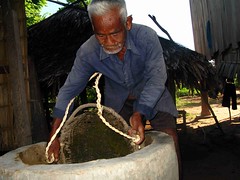Agriculture Investment - How to Value Farmland for Investors
There are many factors to consider when approaching the valuation of an asset; the relationship between supply and tangible demand, the availability and affordability of credit to enable this demand, the earnings generated by the asset and the cost of generating that income. However, as with any asset, Investors should primarily consider the price to earnings ratio of farmland to identify the cost of each unit of income.
The value of commercially viable agricultural land is driven primarily by the profitability of the land as a commercial, income generating asset. The greater the income yield generated from the sale of crops, the higher the value of the land from which that yield is derived. This factor is the absolute key for both farming landowners and investor landowners. Tenant farmers will be prepared to pay higher rents on land where a greater income can be earned and investors will be prepared to pay a higher price for land where the income generated is hi gher.
The profitability of farmland can be measured simply by deducting the combined cost of ownership (mortgage interest), and of production (manpower, fuel, fertilizers seed etc.), from the revenue generated by way of the sale of the crops produced. It should therefore be noted that agricultural commodity prices play a crucial role in ascertaining land values. It is the influence of agricultural commodities that have to a large extent generated the recent gains in farmland prices in the UK, particularly during 2007 and 2008 when commodities were experiencing unprecedented highs. There are of course a number of other factors at play but a pure investor should look mainly at earnings and costs for a picture of the real value, regardless of asking prices. Using this methodology also quickly identifies over-pricing where the cost of ownership and production are close to, or outweigh income.
Supply also affects farmland values, and in areas where there is a high lev el of availability prices are likely to be lower than in areas where availability of good land is suppressed, either through a lack of sellers or an actual lack of existing land. In any agricultural economy the highest yielding land is taken into production first as it is the most profitable. Where profitability of the land in two different areas is similar, the availability of farmland explains much of the variation in prices.
A good example of this can be witnessed in Canada where despite a large availability of land (6.5 million km2) only a small proportion is able to produce premium agricultural yields. Demand for this more profitable land will be highest and it will be the most valuable, whilst less productive land will be less valuable. This makes agriculture investment in Canada tricky for those unfamiliar with the farmland market although there are a number of good farmland investment funds with locally experienced operators.
Outside of this apparently si mple relationship between farm profits (or rents), farmland availability and farmland values, one must also factor in the price of the commodities produced, which are also set by supply and demand. Therefore, to make a qualified projection of future farmland values, one must also have a clear understanding of trends in agricultural commodity prices.
Soft-commodities are cyclical in behaviour, and a greater global supply of say Soy, will drive the price down as it is freely available. There is then a clear economic disincentive for farmers to grow Soy the following year and therefore global stocks fall and the price rises again. These higher prices incentivise further investment in production and the cycle begins again. Other factors also play a part such as an abrupt shock in supply caused by drought or export bans from major producers. We witnessed a recent example of this in late 2010 when Russia halted their exports of wheat, creating a global shortfall and a short- term spike in the price.
This short-term cyclical volatility in soft-commodities makes it difficult to assess farmland values in the short term as it is mostly production levels that have an influence, but the mid to long-term fundamentals of the supply of, and demand for commodities are much more important to the farmland investor. Capital growth is reliant upon long-term agricultural commodity trends rather than short-term price volatility. It is the long-term fundamentals of food demand growth and food supply constraints which have resulted in a historical upward trend in agricultural land values.
On the most basic level, the global population continues to grow at a rate of 200,000 per day, and is due to peak at 9 billion in 2050. This tells us that long-term demand for food will remain not only strong, but at current levels of production, totally unsupportable, therefore the value of the land that produces our food must rise.
David Garner is Partner at boutique alternative investment boutique DGC Asset Management Limited.
Download the complimentary DGC Asset Management Alternative Investment Report from the DGC website.
Article Source: http://EzineArticles.com/?expert=David_D_Garner
